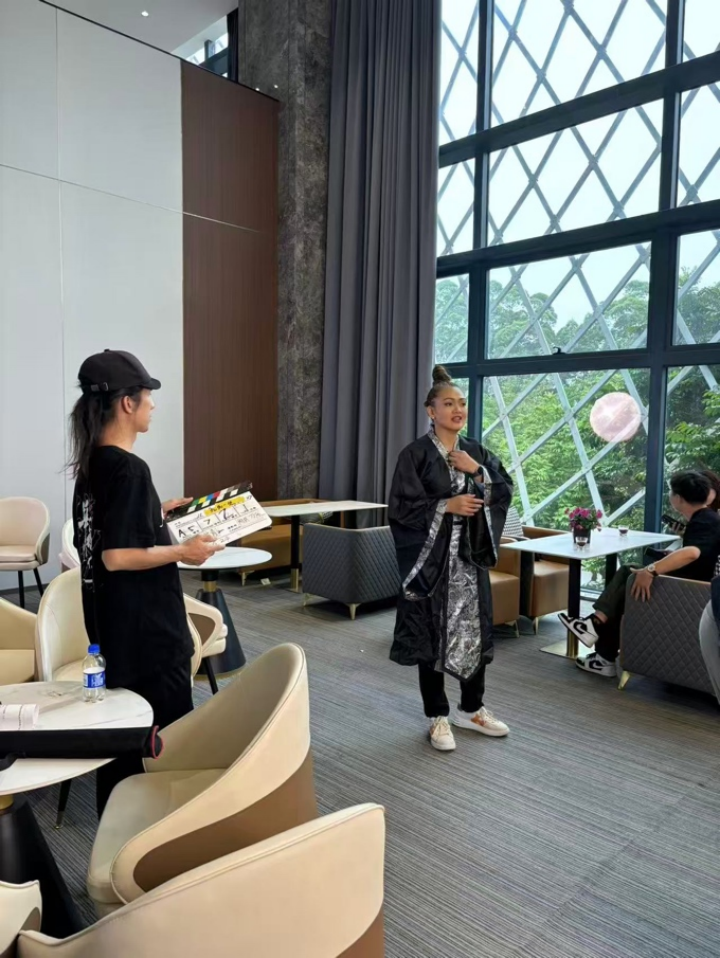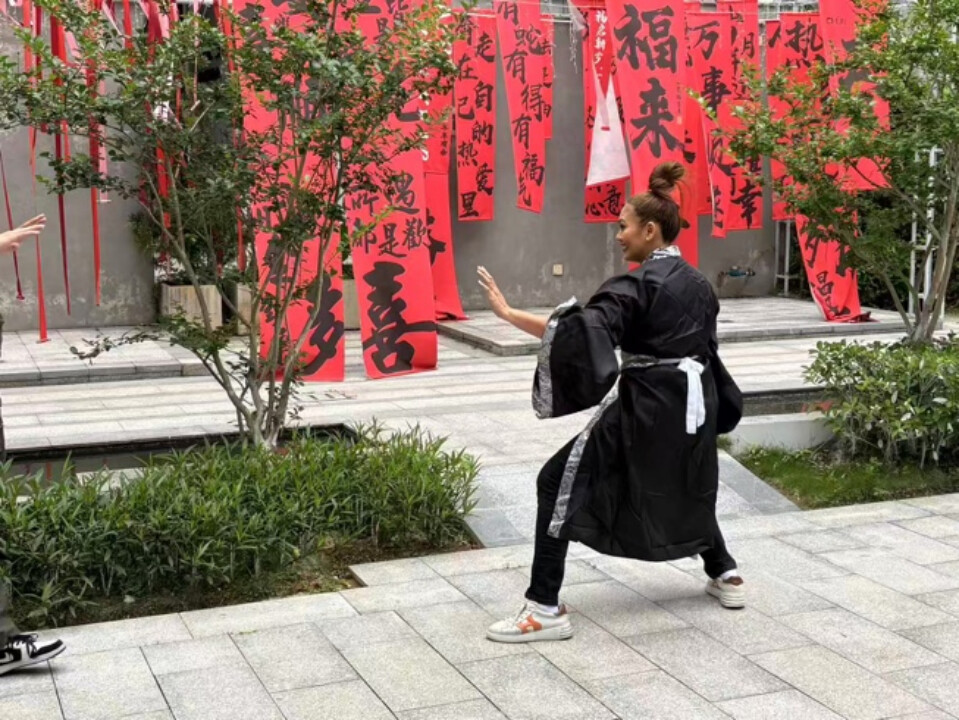Gretchen Malalad, a CGTN correspondent based in the Philippines, is known for her professionalism in breaking news coverage and securing high-level interviews that enhance understanding of China-Philippines cooperation. From May 19 to 27, she attended CGTN's Beijing training camp to boost skills and technology in emergency reporting, while also aiming to offer unique insights into China's economic and cultural dynamics.
Mini drama

I've been in front of the camera hundreds of times throughout my journalism career, but I never imagined standing in front of one while acting in a mini drama series.
When I first got the assignment to cover the rise of micro drama series, not just in China but globally, I was genuinely excited. These short-form shows had already crept into my social media feeds. I remember getting hooked on one about a janitor in a multinational company who turns out to be a billionaire secretly owning the business. He keeps this truth from his wife to test if she truly loves him. The plot sounded ridiculous, yet I couldn't stop watching. I was dying to know how he pulled it off.
My journey took me to Dongguan in Guangdong Province, a town that feels quiet on the outside but pulses with creativity and energy within. This is where many micro dramas are made. I was welcomed by Ouyang Jie, CEO of Shudian Technology Group. As I stepped into their building, I felt like I was walking through a film set wonderland.
Known as Shudian, or "vertical studio," the name reflects the format of their content designed for vertical viewing on smartphones. Inside, I found a grand lobby with glittering chandeliers, leading to an elegant dining hall with lavish table settings for party scenes. Behind a nearby door was a fully equipped hospital emergency room. A few steps away: a police station, jail cell, and even an airplane cabin. These are the most commonly used sets for various plotlines.
Then I heard the clap of a clapperboard.
A 10-person crew, including the actors, was filming a scene in a hotel lobby. A distraught woman walked toward a group of people, searching for someone. I couldn't catch the dialogue, it was in Mandarin, but I learned the story revolved around a love triangle full of betrayal and twists. The scenes were fast-paced, and the dialogue was tight. Each episode runs just two minutes and ends in a cliffhanger to keep viewers bingeing.
Production costs are low, ranging from 5000 to 10000 US dollars. But if a show becomes a hit, it can earn up to 10 million US dollars through ad revenue, in-app purchases, and licensing. These micro dramas are streamed on platforms like Douyin, ReelShort, and DramaBox, where millions of users binge-watch episodes daily.
Actors do their own makeup and choose their own costumes. One series, with up to 60 episodes, can be completed in a week.
Tan Ge, who played the lead, has starred in several micro dramas. She told me that exaggerated expressions are essential in this genre. They need to grab viewers' attention in seconds. Director Han Yue added that shooting in vertical format calls for more dynamic camera movements.

To fully experience the world I was reporting on, the director invited me to act in a short scene tailored just for me. They knew I practiced martial arts and wanted to feature that. I was handed a black traditional outfit reminiscent of classic kung fu films. The plot? I was an ancient warrior suddenly transported into the modern world.
I didn't see that twist coming.
One actor helped me tie my belt and stapled my collar to keep it secure. Another tied my hair into a high bun. I was a mix of nerves and excitement. I had two scenes: one where I arrived in the present day, and another where I fought a rival warrior.
We began in the hotel lobby, standing in as the modern-day setting. The visual and sound effects would play a big role in showing the time travel transition. My cue was to jump, then land in a martial arts pose. Easy enough. But the tricky part was nailing the shocked expression. I had to show disbelief through my eyes, facial tension, and posture. Behind me, a crowd would react by pulling out their phones to film my sudden arrival.
There were four cameras covering every angle. They showed me my mark.
In the first take, I missed it. My jump landed off center. By the third attempt, I hit the mark, but I looked too calm, not like someone who just leapt through time. The crew demonstrated how to exaggerate my expressions. It was harder than it looked. Adding emotion while hitting precise marks and facing a crowd of extras watching me perform it was a lot. It took five takes to finally get it right. I was relieved.

Then came the fight scene.
We moved outdoors to a small garden with a temple-like set. The choreography was simple: three blocks, a dramatic punch, a leap, and a martial shout. My co-star was also a martial artist. We rehearsed the sequence a few times, but there were tweaks to make it more cinematic. The moves weren't difficult; what was missing was the emotion on my face. I needed to look fierce and intense. For the shout, I had to channel my inner Bruce Lee. I joked that I was more of an IP Man type, but they told me that wouldn't cut it for micro dramas. It took us eight takes to get the shot.

I only filmed two scenes, but it was a real challenge. Like any profession, acting takes skill and years to master. The cast, crew, and directors I met have that skill, and it's one reason micro dramas are booming. With short attention spans and mobile first audiences, this genre is built for the times. And it's only going to keep growing, one vertical screen at a time.
















